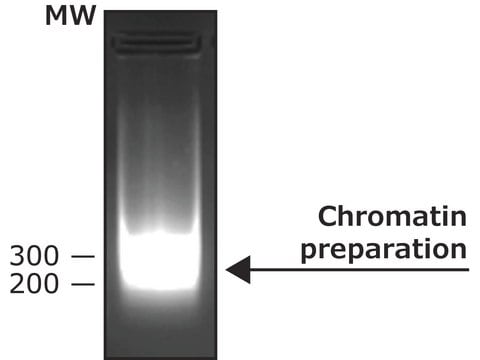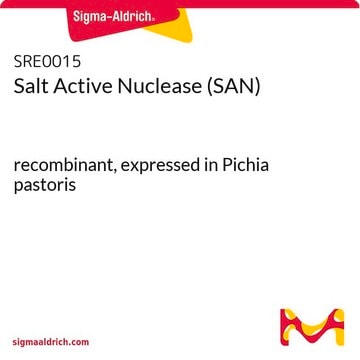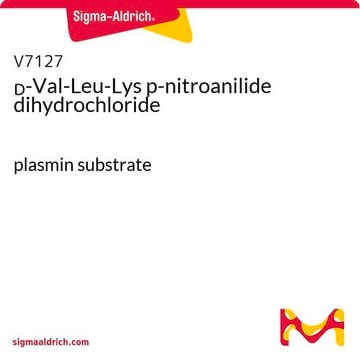Kluczowe dokumenty
N3755
Nuclease micrococcal from Staphylococcus aureus
100-300 units/mg protein
Synonim(y):
Micrococcal nuclease, Endonuclease micrococcal, MNase, Micrococcal endonuclease
Wybierz wielkość
756,00 zł
Wybierz wielkość
About This Item
756,00 zł
Polecane produkty
pochodzenie biologiczne
Staphylococcus aureus
Poziom jakości
Formularz
lyophilized powder
aktywność właściwa
100-300 units/mg protein
skład
Protein, ≥40% E1%/280 (Balance primarily sodium citrate)
metody
DNA purification: suitable
przydatność
suitable for molecular biology
Zastosowanie
diagnostic assay manufacturing
temp. przechowywania
−20°C
informacje o genach
Staphylococcus aureus subsp. aureus Mu50 ... nuc(1120790)
Szukasz podobnych produktów? Odwiedź Przewodnik dotyczący porównywania produktów
Powiązane kategorie
Zastosowanie
Działania biochem./fizjol.
Definicja jednostki
Inne uwagi
Kod klasy składowania
11 - Combustible Solids
Klasa zagrożenia wodnego (WGK)
WGK 3
Temperatura zapłonu (°F)
Not applicable
Temperatura zapłonu (°C)
Not applicable
Środki ochrony indywidualnej
Eyeshields, Gloves, type N95 (US)
Wybierz jedną z najnowszych wersji:
Certyfikaty analizy (CoA)
Nie widzisz odpowiedniej wersji?
Jeśli potrzebujesz konkretnej wersji, możesz wyszukać konkretny certyfikat według numeru partii lub serii.
Masz już ten produkt?
Dokumenty związane z niedawno zakupionymi produktami zostały zamieszczone w Bibliotece dokumentów.
Klienci oglądali również te produkty
Active Filters
Nasz zespół naukowców ma doświadczenie we wszystkich obszarach badań, w tym w naukach przyrodniczych, materiałoznawstwie, syntezie chemicznej, chromatografii, analityce i wielu innych dziedzinach.
Skontaktuj się z zespołem ds. pomocy technicznej












